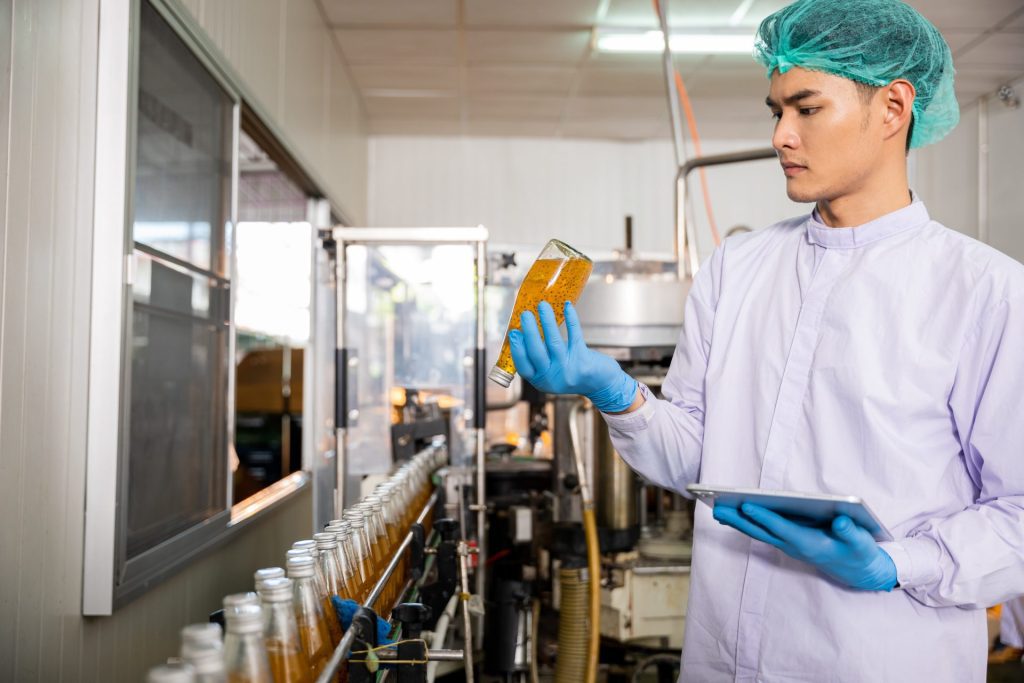On January 30, 2024, the U.S. Food and Drug Administration (US FDA) published an updated Hazard Guide as part of a revised draft guidance for the implementation of the PCHF rule under FSMA. The significant updates summarize comments that the US FDA received on the 2016 draft guidance for the Hazard Analysis and Risk-Based Preventive Controls for Human Food Rule. This guidance applies to domestic and foreign (FDA registered) facilities that are involved in manufacturing, processing, packing, and holding human food to be consumed in the United States.
As per the US FDA, this new draft document adds “context and information on hazards in food categories of current interest to ensure that the available draft documents adequately reflect the Agency’s current thinking on the most relevant food safety hazards.” This updated guidance document will help existing and future Preventive Control Qualified Individuals (PCQIs) update their food safety knowledge and access an updated hazard guide to select known or reasonably foreseeable hazards (referred to as “potential hazards” in the PCHF rule and FSPCA curriculum).
What are the new additions?
- Expanded Glossary
- Training Section relevant to the PCHF rule under FSMA
- How to use the updated Hazard Guide in Appendix 1
- Product categories in Hazard Guide reflect food ingredients.
- Discussion on Process-related hazards
- Food allergen hazards
- Bibliography of citations to less-commonly known hazards identified for different food categories.
PCQIs will find it useful to learn:
- How a preventive control for human food plan is structured and the importance of each section such as the hazard analysis and the preventive control procedures.
- How to use the updated hazard guide to select the biological, chemical, radiological and physical hazards that are most relevant to their business.
- How to perform a hazard analysis that’s compliant with the PCHF rule.
- How to select the proper preventive controls for biological hazards based on the specific pathogens that may survive or grow in specific food products.
- how to best implement the “management components” of the food safety plan. By management components, the US FDA refers to monitoring, corrective actions and corrections, verification documents and records.
- How to manage and maintain food safety plan records under the PCHF rule.

Glossary and abbreviations
The definitions that are provided in the glossary will help with understanding how a plan is implemented and maintained. For instance, definitions are provided for fully cooked food, safe moisture level, End-Point Internal Product Temperature (EPIPT), written procedures for receiving raw materials and other ingredients, root cause analysis and root cause investigation. The draft guidance also includes abbreviations.
Employee Training Recommendations
Receiving adequate health and hygiene training is a critical aspect of meeting the intent of the PCHF rule. The US FDA draft guidance stresses that PCQIs and facility employees involved with Operations, Human Resources and Procurement must be familiar with food safety management and provide training resources to plan personnel. In this regard, HR teams should enable facility staff to perform their assigned duties under the food safety plan. For instance, procurement departments should have the training to verify supplier compliance to food safety specifications. Warehousing employees receive training on performing incoming product inspections according to supply chain controls. Operations should provide adequate training to staff on sanitation, maintenance, lab testing, surface swabbing to allow proper food safety plan implementation. Employee training should include a review of corrective action procedures. In addition, managers and supervisors should have training in the preventive control plan “as a whole.”
The draft guidance includes many training resources including resources for the design of validation studies (under process preventive controls).
Food Safety Plan Implementation
The revised draft guidance for the PCHF rule presents a review of differences between HACCP plans (NACMCF) and FDA PCHF plans which will be useful to HACCP coordinators and PCQIs. While an FDA PCHF plan is more encompassing than a HACCP plan, the guidance suggests following the five preliminary steps of HACCP to prepare food safety teams to the hazard analysis. Details about conducting hazard analyses follow HACCP guidelines and include evaluating the severity of each hazard and likely occurrence that they may be present in the food. A useful list of questions (see Chapter 2, page 7) is also provided to help food safety teams and PCQIs identify potential hazards associated with the facility, the facility’s process and manufactured foods.
Examples of potential hazards (chemical, biological, physical) are listed in Chapter 3 of the draft guidance. The section on biological hazards links specific pathogens to process, ingredients, facility and workers. Under chemical hazards, you will find a list of potential pesticides found in foods, such as organophosphates or chlorinated hydrocarbons. Similarly, radium 226 and 228 and Strontium 90 are a few isotopes listed as potential radiological hazards that may be present in food.
Preventive controls
Chapter 5 and 6 address process-related preventive controls and how they can reduce or eliminate hazards towards food safety. These chapters put the emphasis on biological hazards with chapter 6 describing examples of process controls for the thermal process of cookies, soups and salsas. Detailed validation studies are presented for these products. The model monitoring procedures also include examples of batch and continuous processes. The information is presented using food safety plan templates which can be found in Appendix 2.
Allergen controls including label controls.
Chapter 11 is written to explain how to establish and implement a food allergen program through CGMP, sanitation and label preventive controls. As with previous chapters, detailed examples of control procedures are presented.
While the guidance makes reference to FALCPA and the addition of sesame, it provides some additional recommendations regarding advisory statements:
- Allergen advisory statements must not replace compliance with CGMPs or allergen cleaning controls.
- Statements must be truthful and not misleading to help the consumer identify a real allergen risk.
- If using advisory statements, the draft guidance stipulates that “PCQIs should provide a written justification [in the plan] for why allergen cross-contact controls cannot ensure protection of food from allergen cross-contact.”
These activities would extend to your supplier approval program and the receipt of ingredients for which an allergen advisory statement may have been made.
More frequent reassessments of the food safety plan are called for when experiencing repeated deviations of allergen cleaning and control processes. In this case, advisory statements may be justified because appropriate CGMPs and allergen preventive controls cannot fully eliminate the risk of allergen cross-contact.
Under the label control section, the draft guidance discusses exception records for monitoring allergen declaration on packaged foods. Automated barcode scanners or checklists on production records may be used to monitor that the correct label is used or affixed to the correct product. When maintaining exception records, only events showing mis-identified priority allergens on labels are documented.
Supply chain controls and the concept of SAHCODH hazard (“a hazard for which there is a reasonable probability that exposure to the hazard will result in serious adverse health consequences or death to humans”) is also mentioned in the Allergen control chapter of the draft guidance. When such Class 1 Recall hazards are identified in the risk analysis, a supplier audit by a qualified auditor is mandated.
Appendix 1 – Updated Hazard Guide
The update hazard guide in Appendix 1 includes potential hazards for 16 food groups and ingredients within the US FDA regulatory scope. Information is up to date as of 2022. This section provides the “universe of all hazards” pertaining to specific food commodities.
Section A1.8 provides information on how to use the Tables in Appendix 1. The updated hazard guide is a starting point for the “complete” identification of food safety hazards. It is the responsibility of PCQIs and the food safety team to determine which potential hazards apply to the facility’s manufacturing scope and which ones require a Preventive Control (PC). When reviewing the tables in this section, food safety teams should consider that listed hazards may be present:
- Only for some products within the Food Subcategory.
- Based on the origins of the food ingredient used to make the finished product.
- When a food ingredient is utilized and alters the product characteristics (example given of Bacillus cereus pathogen which would be found only in hydrated rice as opposed to uncooked rice).
We also recommend reviewing the footnotes at the bottom of the tables to qualify some potential hazards for your hazard analysis.
As we await the release of Version 2 of the FSPCA curriculum (Preventive controls for human food course) (date is TBA), the FDA PCHF draft guidance and updated hazard guide is a good source of technical reference for food safety teams and PCQIs to reassess and make adjustments to their food safety plan(s).
References
Updated Hazard Guide (US FDA)
Hazard Database Lookup – Food Control Methods by Food Methods
Sirocco Consulting provides food safety training and consulting services. Contact us to obtain a free consultation on the development of a food safety plan (HACCP, Canadian PCP, FDA PCHF). For a list of food safety courses, please click here.





